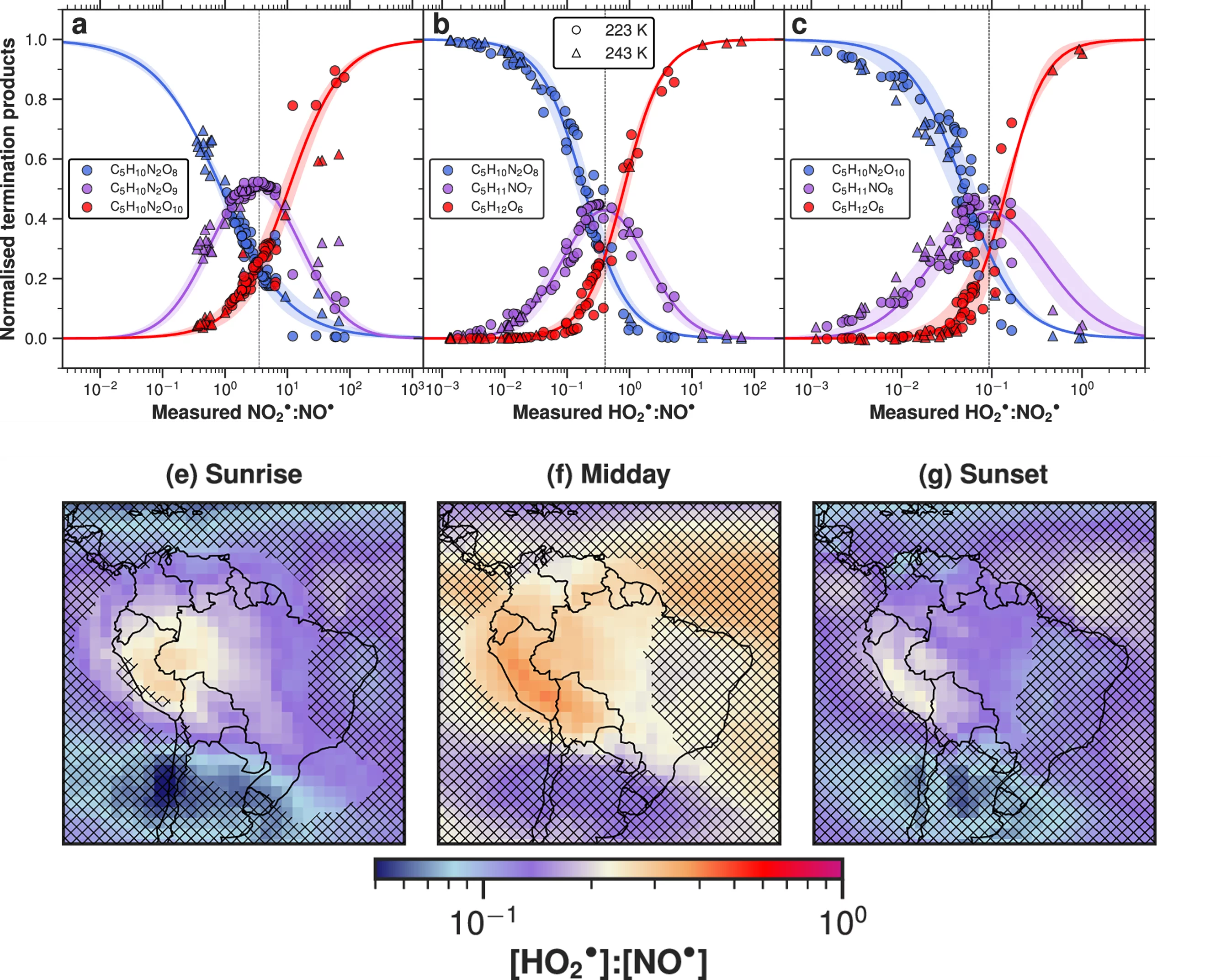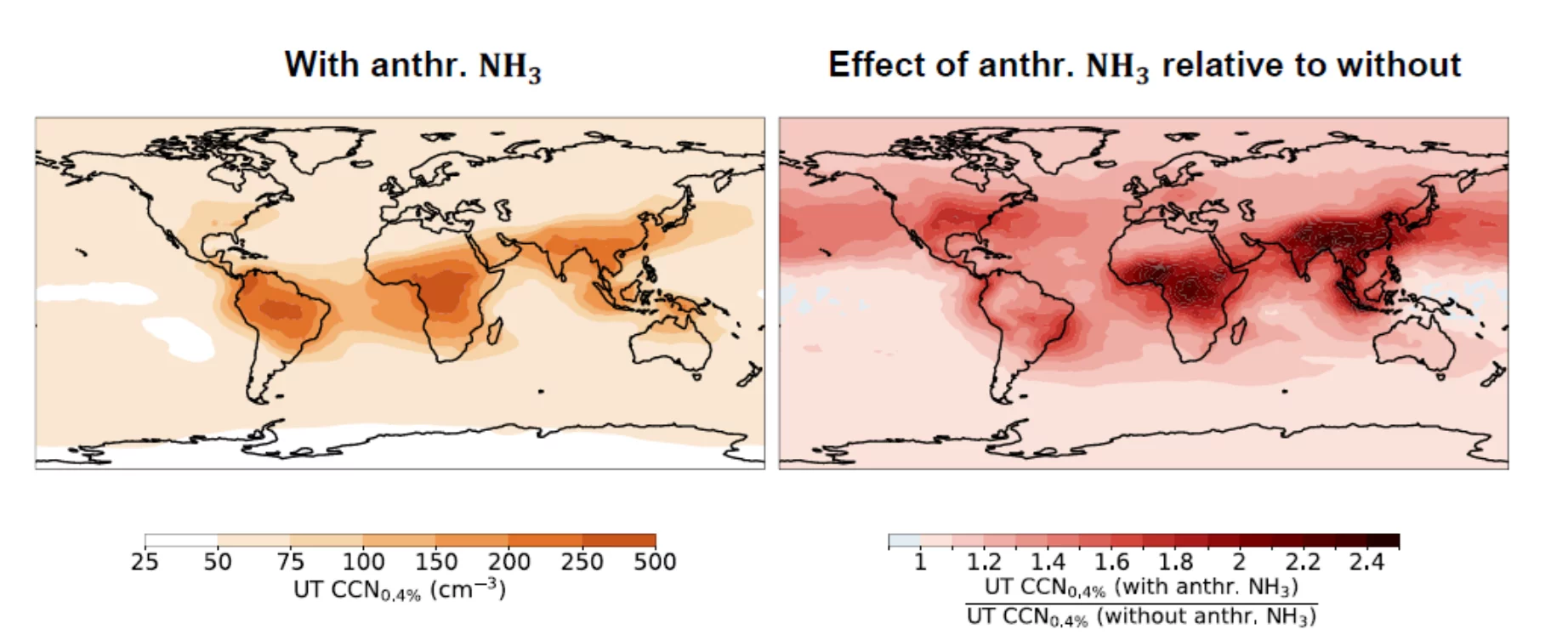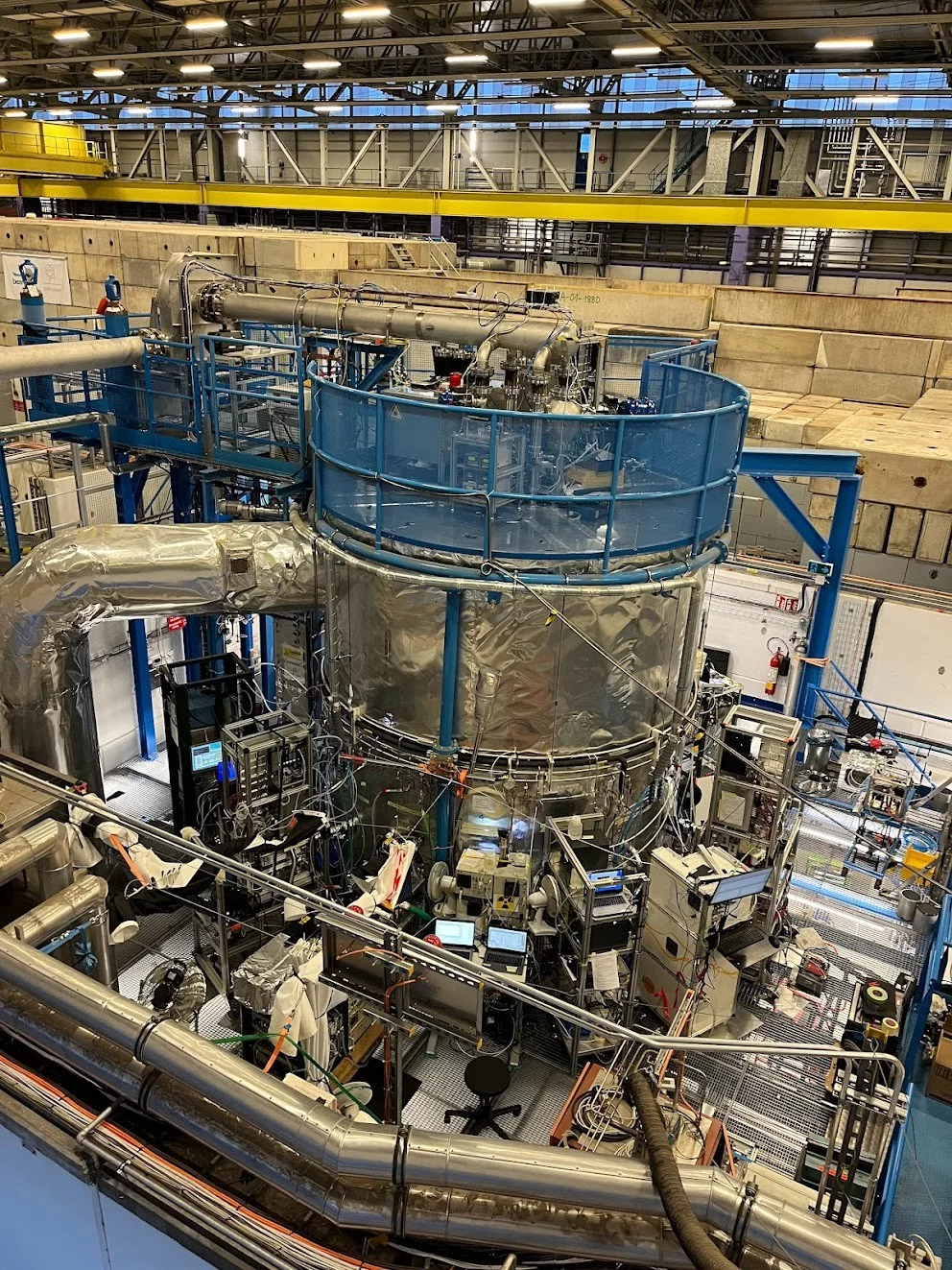Two consecutive studies from CERN’s CLOUD experiment reveal how gases from trees and agriculture influence high-altitude aerosol formation
The upper troposphere — a cold, dry region 8 to 15 kilometers above Earth’s surface — is crucial for forming and regulating clouds that shape the planet’s energy balance. Aerosol particles in this region act as seeds for clouds, influencing how much sunlight is reflected or trapped. Yet, the origins of these particles have long remained poorly understood.
Two consecutive studies from the CLOUD consortium, conducted in the CLOUD chamber at CERN with the participation from the Paul Scherrer Institute (PSI), now reveal how natural and anthropogenic emissions each drive particle formation under these extreme conditions — and may even compete for influence in the upper atmosphere.
Natural source: Isoprene from trees forms particles in the upper atmosphere
The first study, published in Nature Communications, shows that isoprene (C₅H₈) — a major natural hydrocarbon released by trees and the most emitted organic compound globally — can form new aerosol particles under upper-tropospheric conditions.
At the cold temperatures and low pressures of this region, isoprene follows distinct oxidation pathways, producing highly oxygenated molecules that vary strongly with sunlight and nitrogen oxide (NOₓ) levels. These molecules can nucleate and grow into particles that influence cloud formation and Earth’s radiation balance.
“Isoprene represents the natural side of atmospheric particle formation,” said Imad El Haddad, Group Leader at Paul Scherrer Institute and steering group member within the CLOUD consortium. “Its chemistry changes dramatically in the cold upper troposphere, allowing nature itself to seed clouds.”
Paper: Isoprene oxidation drives new particle formation in the upper troposphere
Journal: Nature Communications
Link: https://www.nature.com/articles/s41467-025-64229-w
Anthropogenic source: Agricultural ammonia alters upper-atmospheric composition
A second, preceding study published in PNAS demonstrated that ammonia (NH₃) from fertilizer use and livestock emissions can also reach the upper troposphere, where it strongly enhances particle formation — especially over Africa and South and East Asia, regions of intensive agriculture.
“Ammonia from agriculture shows that human activity can compete directly with natural atmospheric chemistry,” said El Haddad. “These emissions change how and where particles form, even far above the surface.”
Paper: Global impact of anthropogenic NH₃ emissions on upper-troposphere/lower-stratosphere aerosol formation
Journal: Proceedings of the National Academy of Sciences (PNAS)
Link: https://www.pnas.org/doi/10.1073/pnas.2506658122
Together, these consecutive studies from the CLOUD experiment reveal that natural and anthropogenic emissions can both act as drivers of aerosol formation in the upper atmosphere — one rooted in forests, the other in agriculture. Understanding how these contrasting influences shape clouds and radiation will be key to improving future climate predictions.
Group Head Molecular Cluster and Particle Processes








